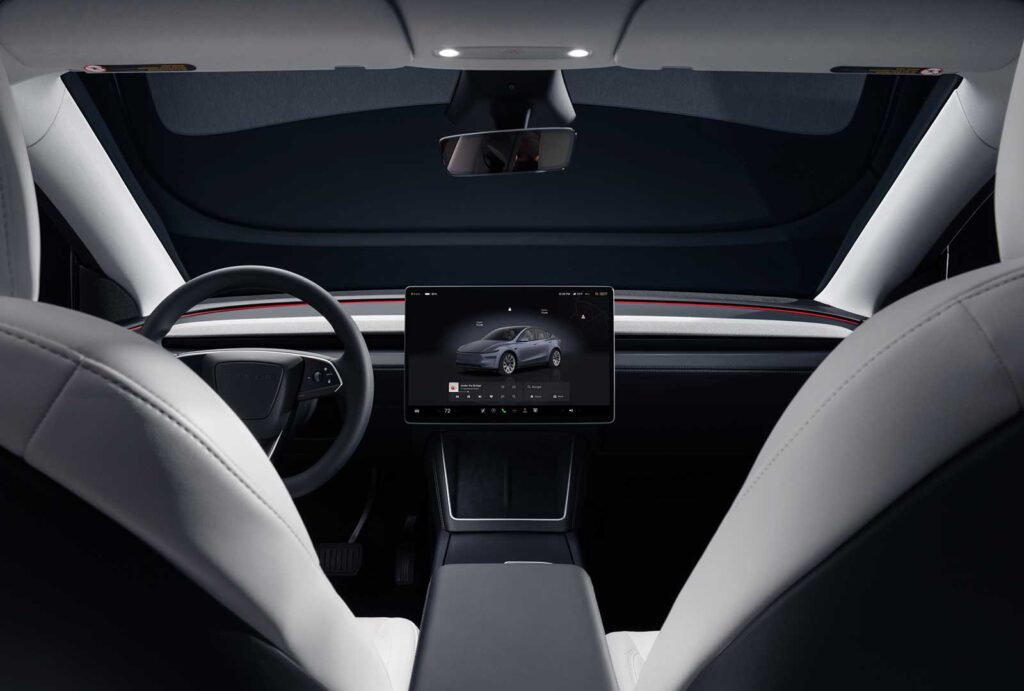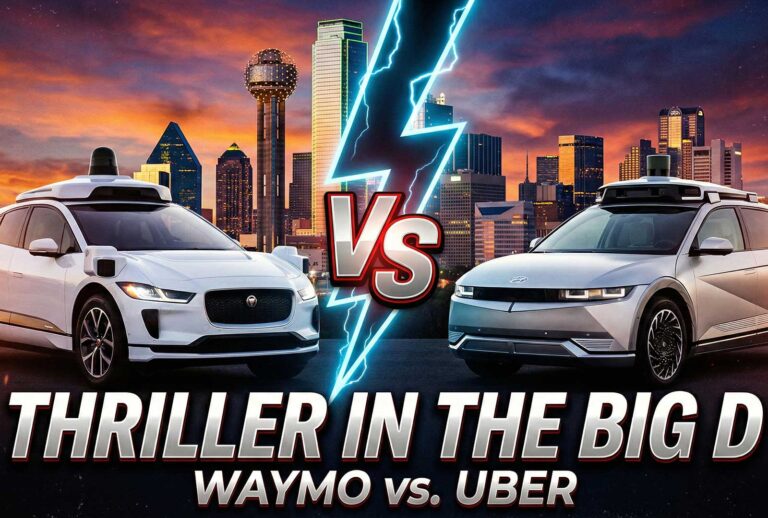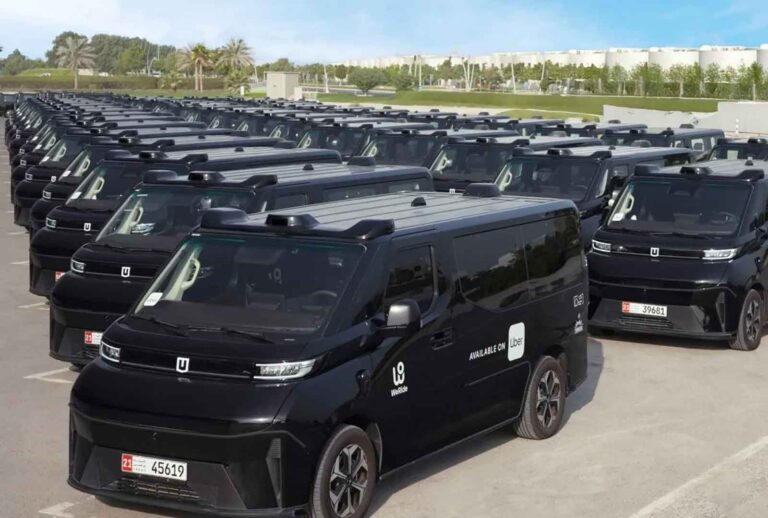Tesla’s Robotaxi Launch Could Accelerate Growth of Personally-Owned Autonomous Vehicles

May 25, 2025
This Week in The Autonomy Economy is presented by Koop, a specialist insurance provider focused on robotics and autonomous vehicles.
This Week in The Autonomy Economy, Waymo surpassed 10 million paid rides, Elon Musk shared more details on Tesla’s upcoming robotaxi launch in Austin which could accelerate the growth of personally-owned autonomous vehicles and Uber opened the Waymo early rider program in Atlanta.
Hotlanta is becoming Autonomouslanta as the Peach State’s capital emerges as a major hub for autonomy. This week, Uber opened Waymo to early riders, and Zoox announced plans to begin testing in the market. These announcements build on the momentum already underway in Atlanta, with May Mobility preparing to launch robotaxis on the Lyft network this summer and Serve Robotics expanding to the city through a partnership with Uber Eats.
Atlanta has officially joined the ranks of America’s leading autonomy hubs, alongside San Francisco, Los Angeles, Phoenix, Las Vegas, Austin, Dallas, and Miami. First one autonomous vehicle company enters a market, then another. It’s almost as if they are playing a game of follow the leader. If that pattern continues, which city will be next? Nashville? New Orleans? San Diego?
No matter what city emerges next as a hub, one thing is clear: robotaxis are scaling across the U.S., and that’s good for the economy. But to sustain this momentum, we need a national autonomous vehicle framework that includes trucks weighing over 10,001 pounds, to ensure that the benefits of automation and autonomy are shared by all Americans, not just those living in states with favorable regulations.
The Council for Economic Resilience (CFER) was founded for this very reason. To ensure that automation and autonomy benefits every single member of society. Our mission to promote the future of automation and autonomy will be accelerating next week. Stay tuned for some exciting news.
📰 Need to Know: This Week in the Autonomy Economy
Tesla’s robotaxi debut in Austin marks its entry into paid autonomous ride-hailing, beginning with a small fleet of 10–12 Model Ys. The launch validates Elon Musk’s long-promised FSD strategy and positions Tesla as a direct challenger to Waymo’s market leadership.
If Tesla’s robotaxis gain traction and the novelty persists, consumer habits may shift toward choosing Tesla for convenience and brand recognition. This could accelerate adoption of personally-owned autonomous vehicles and reshape market competition.
Waymo risks losing share to Tesla if it doesn’t expand into personally-owned autonomous vehicles or refine fleet operations. However, its 10+ million paid rides give it credibility, and partnerships with Uber provide a pathway to defend market share.
Atlanta has quickly joined the ranks of U.S. autonomy hubs with Uber opening Waymo’s early rider program, Zoox testing, May Mobility preparing to launch on Lyft, and Serve Robotics expanding via Uber Eats. The city’s growing ecosystem signals strong regional momentum.
Fleet operations, including cleaning, servicing, and charging will determine long-term success. Tesla has integrated this into its model, while Waymo could rely on Moove or other partners. Uber, meanwhile, is investing heavily in fleet management as part of its fragmentation strategy.
👔The Road to Autonomy provides market intelligence and strategic advisory services to institutional investors and companies, delivering insights needed to stay ahead of emerging trends in the autonomy economy.
Discover how our market intelligence and strategic advisory services can empower your next move by requesting a market intelligence briefing.
One-Time Briefings • Quarterly Subscriptions • Bespoke Advisory Services
Subscribe to This Week in The Autonomy Economy™
Join institutional investors and industry leaders who read This Week in The Autonomy Economy every Sunday. Each edition delivers exclusive insight and commentary on the autonomy economy, helping you stay ahead of what’s next.
What’s Moving the Markets
Tesla’s Robotaxi Launch Could Accelerate Growth of Personally-Owned Autonomous Vehicles

With June just days away, we are fully confident that Tesla will launch their highly anticipated robotaxi network in Austin before the end of the month.
While Elon Musk has a history of bold promises, we believe this promise will be kept and that Tesla will debut a limited robotaxi service within a constrained operational design domain (ODD), most likely between Giga Texas and Austin-Bergstrom International Airport, initially.
Over time, we expect the initial fleet of 10 to 12 vehicles to scale rapidly, reaching over 100 vehicles by August/September and operating in a much broader ODD that includes downtown Austin. The pace of this expansion will largely hinge on vehicle performance and Tesla’s confidence that the vehicles are operating in an extremely safe and reliable manner with limited to no interventions (by remote operators).
Eventually, Tesla’s robotaxis will operate in a comparable ODD to Waymo’s, and when this happens, all eyes will be on the market data. How long will it be until Tesla begins to eat into Waymo/Uber market share in the city?
What happens if the novelty of riding in a Tesla robotaxi never wears off and quarter-over-quarter, Tesla continues to gain market share? Could this then be a sign of changing consumer habits?
Outside of the market share data, other critical signals will be continued social media buzz in the market and public statements from Waymo regarding their expansion into personally-owned, Waymo-powered autonomous vehicles.
If Waymo does indeed go this route and allows those vehicles to be put onto the Waymo One network when they are not in use by their owners, it would validate Mr. Musk’s “Airbnb strategy” and significantly complicate Uber’s position.
But before we get there, Waymo is going to have to figure out the fleet management aspect of autonomy and that is something that Tesla has already figured out. Or perhaps Waymo could outsource all of those operations to Moove as they have done in Phoenix and Miami.
If you put your personally-owned autonomous vehicle out on a network, you want it to come back clean, not dirty. It’s that simple and Uber knows it, that is why they have been investing in fleet management operations for autonomous vehicles.
This very scenario also reinforces why Andrew Macdonald and the Uber team are aggressively pursuing a fragmentation strategy. For Uber to succeed in robotaxis, a fragmented market is essential.
If Waymo builds Waymo One into a Tesla-like direct competitor, Uber’s strategy will have been validated. The next question becomes, who becomes the largest autonomous vehicle fleet provider to Uber. May Mobility, Nuro or Wayve? In all opinion, it will all depend on who gets what OEM deals.
How the robotaxi market eventually shakes out is anyone’s guess at this point, but next month we will move one step closer to finding out.
Our take: The robotaxi market will enter its next phase when Tesla officially joins the market in June.
Advocating For The Autonomy Economy | Sponsored

Automation and autonomy will strengthen the economy, create jobs, and reduce inflation. Council for Economic Resilience is dedicated to promoting the future of autonomy and automation for the benefit of the American public.
Get Engaged, Learn More visit CNFER.org
Council for Economic Resilience, Inc. is a 501(c)4 Advocacy Group
Zoox Expands to Atlanta with No Commercial Service in Sight

This week Zoox announced that they are expanding to Atlanta. But why expand when the company has yet to commercialize a single market and launch paid rides? It appears to us that Zoox is more focused on keeping pace with Waymo’s announcements than actually deploying robotaxis for paying customers.
While Zoox puts out press releases, Waymo puts paying passengers in cars and this week Uber opened the Waymo early rider program in Atlanta to paying passengers. The same week, what happens? Zoox announced an expansion to Atlanta, though once again, no timeline was given for commercial service.
Another city, another test fleet. Still no paid rides for Zoox. What exactly is Amazon’s strategy for Zoox? While Alphabet and Tesla, Amazon’s Trillion Dollar Club partners are turning autonomy into real businesses, Amazon seems to be in no rush. But why slow walk Zoox when the robotaxi market is rapidly accelerating?
To date, Waymo has completed over 10 million paid rides and Tesla is selling $99 a month FSD Supervised subscriptions and next month they will begin operating a paid robotaxi service in Austin. Meanwhile, Zoox has yet to generate a single dollar in revenue from a commercial ride. Why?
If success in autonomy were measured by testing cities or as Waymo calls them road trips, Zoox would be viewed as a viable contender, as they have announced testing in seven cities/regions (San Francisco Bay Area, Las Vegas, Seattle, Miami, Austin, Los Angeles, Atlanta). But not one of these markets has launched commercially. Why expand testing so aggressively without commercializing a single market?
Waymo did it differently, perfecting operations in Chandler, Arizona and the wider Phoenix metropolitan area before expanding to San Francisco and beyond. Shouldn’t Zoox do the same in one of their markets? Perhaps Las Vegas?
Even Tesla is following the Waymo playbook, starting a commercial robotaxi service in a single market, Austin, within a limited operational design domain (ODD), and gradually expanding overtime. The Waymo model works. It’s a proven approach that establishes a solid foundation for building a highly scalable and successful commercial robotaxi business.
Zoox, what is the plan? Will you pivot and follow the Waymo playbook as it has been proven successful? Or will you invent a new playbook that involves commercialization? The market is confused. You’re being left behind and, most critically, you’re no longer part of the robotaxi conversation.
When was the last time you heard the word Zoox on TV when a financial commentator was talking about the robotaxi market? Months? Years? It’s been a long time. Zoox is no longer part of the zeitgeist.
Our take: Amazon what’s your move? Will Zoox reverse course and embrace the Waymo playbook?
Piquing Our Interest
Baidu Surpasses 11 Million Paid Rides On their Q1 2025 earnings call, Baidu announced that its Apollo Go robotaxi service has surpassed 11 million paid rides since 2019, an average of 1.83 million rides per year. Today, Baidu is currently operating over 1,000 fully autonomous vehicles across 15 cities in multiple countries.
Waymo Expands Commercial Service to San Jose The California Public Utilities Commission (CPUC) has granted Waymo permission to operate its commercial robotaxi service in the South Bay, including nearly all of San Jose. Is San Jose International Airport next?
Uber Opens Waymo Service to Early Riders in Atlanta Uber has opened early access to Waymo rides in Atlanta ahead of the public launch this summer.
Nuro Expands Testing to Miami, Dallas and San Diego As Nuro prepares to license its autonomous driving system, the company has expanded testing to three additional markets across the United States.
Delayed Until 2027 in the UK? It appears the UK Government is set to delay the deployment of fully autonomous vehicles without a safety driver until 2027. But why? The technology is ready, it’s been proven, and the UK has a homegrown leader in Wayve that it could be championing.
📰 Before these stories were featured here, they were available on X. Follow @RoadToAutonomy today to stay up-to-date on the latest news and developments shaping the autonomy economy.
Social Buzz
Secretary Duffy Leads Charge for National AV Framework Amid Global Expansion by China
Secretary Duffy is a pro-autonomy, pro-America Secretary of Transportation who strongly supports the creation of a National Autonomous Vehicle Framework. At a time when China is expanding its autonomous driving initiatives to the Middle East and Europe in an effort we refer to as the Autonomous Belt and Road Initiative, Secretary Duffy is actively laying the groundwork for a unified national framework.
This policy will enable companies like Tesla and Waymo to scale their robotaxi operations under consistent, fair regulations that prioritize safety, efficiency, and American leadership.
Our take: A national autonomous vehicle framework that includes trucks weighing over 10,001 pounds will accelerate the growth of the autonomy economy, delivering broad-based benefits to the American public.
10 Million Paid Rides and Counting
This week, Waymo surpassed 10 million paid rides to become the first U.S. autonomous vehicle company to surpass this milestone. If the average Waymo ride was $10 per ride, Waymo would have generated $100 million in revenue.
While the average per ride cost is unknown, one thing is known. Waymo has surpassed in our estimates $100 million in revenue. Now the question becomes, how long until Waymo surpasses $1 billion in revenue.
Our take: Waymo is no longer just a moonshot, it’s becoming a real business, and soon a very big one. Could Waymo become the next YouTube inside Alphabet? It’s possible. We’ll just have to wait and see.
Waymo is currently ranked #1 with a bullish outlook on the AUTONOMY LEADERBOARD in the autonomous vehicle category.
Latest The Road to Autonomy Podcast
Scaling Sidewalk Autonomy: How Serve Robotics Is Reinventing Last-Mile Delivery

Ali Kashani, Co-Founder & CEO, Serve Robotics joined Grayson Brulte on The Road to Autonomy podcast to discuss how sidewalk delivery robots are transforming the economics and experience of last-mile delivery.
Watch on YouTube | Spotify | X
Listen on Apple Podcasts
May 20, 2025
Latest Autonomy Markets Podcast
Tesla’s FSD Robotaxi Launch Preview, Waymo’s AI and Ownership Vision, Aurora Stumbles as Autonomous Trucking Heats Up

This week on Autonomy Markets, Grayson Brulte and Walter Piecyk preview Tesla’s upcoming FSD robotaxi launch, Waymo’s continued interest in personally-owned autonomous vehicles and Aurora’s stumbles.
Watch on YouTube | Spotify | X
Listen on Apple Podcasts
May 24, 2025




